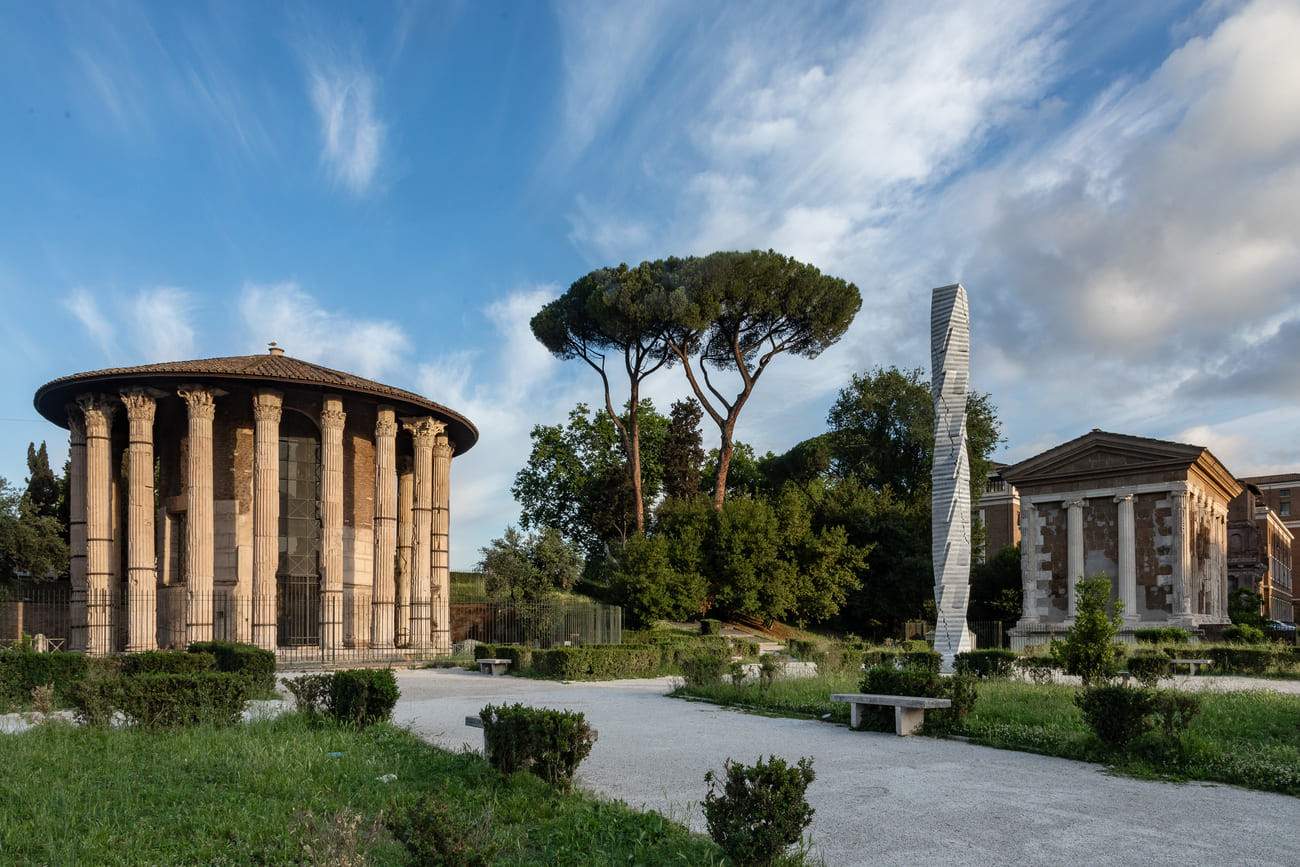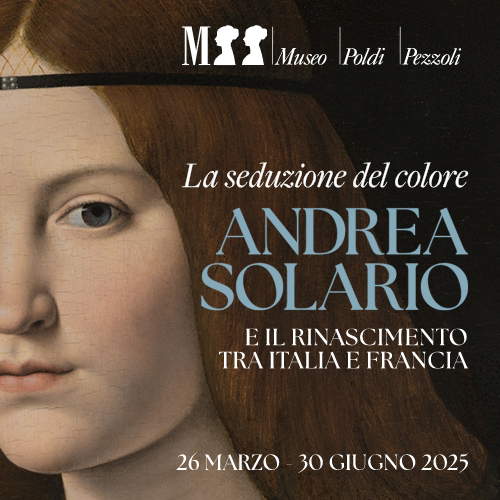Rome, five monumental columns by Park Eun Sun to celebrate the relationship between Italy and Korea
From June 11 to Sept. 30, 2024, on the occasion of the Italy-Korea Cultural Exchange Year 2024-2025, five 14- and 6-meter-high artist’s columns made of polychromatic marble and granite will be placed between the Colosseum Archaeological Park, Piazza Bocca della Verità and Septizodium in Rome: this is the art installation entitled Colonne Infinite, by Korean artist Park Eun Sun, curated by Leonardo Contini. An art installation that aims to become a symbol of encounter and dialogue between contemporary and antiquity, Italy and Korea, East and West. Five monumental works that, reflecting the tradition of the column, transform thestructural element into an art object.
The exhibition, produced in collaboration with the Colosseum Archaeological Park, the City of Rome and the Contini Art Gallery, will take place at three significant sites in Rome’s historic center, such as the Temple of Venus, Piazza Bocca della Verità and the Septizodium overlooking the Circus Maximus
In the context of the Archaeological Park of the Colosseum, two works in red and black granite propose a ’poetics of absences’ apt to draw the eye to where now lingers the emptiness, imbued with historical and artistic significance, of what time and history have torn down. Park’s columns then ideally continue the peristyle of the Temple of Venus, which stood before the Colosseum. In the context of the Piazza della Bocca della Verità, a single fourteen-meter work soars into the Foro Boario almost like a bell tower between the Temples of Hercules Vincitore and Portunus, placing itself in dialogue with the Trajan and Aurelian columns and perhaps ideally taking the place of the Antoninus Pius column, the remains of which were found in the 18th century (although this stood in the Capo Marzio and not in the Foro Boario). Finally, two columns over six meters high stand at the foot of the site where the Septizodium, a monumental nymphaeum of the imperial age, once stood. The two works overlook the Circus Maximus.
The theme of the exhibition is an expression of the sculptor’s concept of ’infinity,’ but also aligns with the desire for an infinite development of the exchange relationship between Italy and Korea on the 140th anniversary of diplomatic relations between the two nations. Indeed, the exhibition of Park Eun Sun’s monumental works in Rome ideally unites Italy and South Korea, proposing an ’archaeology’ that investigates not only time but also space and the evolution of art over the centuries. Internationally acclaimed, Park creates works that fuse his Eastern roots with Western artistic tradition. His signature style is manifested in the deep fractures that furrow his works, becoming an integral part of them. These ’wounds’ evoke, on the one hand, suffering, but on the other are a symbol of rebirth, as well as a window that allows one to ’see beyond the surface’ to admire the inside of the sculpture, where the material is left raw. Park’s works are also distinguished by the use of a refined technique distinguished by the alternation of two different colors, which returns the effect of an elegant bichromatic layering.
The exhibition is organized by the Ministry of Culture, Sports and Tourism of the Republic of Korea, the Korean Cultural Institute in Italy and the Korean Foundation for International Cultural Exchange (KOFICE).
Image: Infinite Columns by Park Eun Sun. Photo credit Nicola Gnesi for Korean Cultural Institute.
 |
| Rome, five monumental columns by Park Eun Sun to celebrate the relationship between Italy and Korea |
Warning: the translation into English of the original Italian article was created using automatic tools. We undertake to review all articles, but we do not guarantee the total absence of inaccuracies in the translation due to the program. You can find the original by clicking on the ITA button. If you find any mistake,please contact us.



























